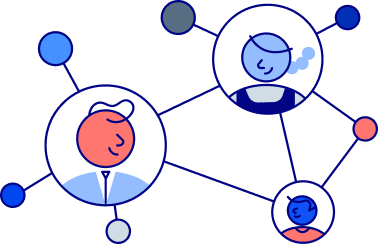This blog post was co-authored by MobSquad – MobSquad helps technology professionals continue working with their current U.S. company, nearshore from Canada.
In recent years, the U.S. has increased restrictions on legal immigration while the number of people immigrating to Canada has steadily climbed. With a similar climate, culture, and lifestyle as the U.S., Canada is an appealing choice for many foreign nationals. International students and STEM professionals in the U.S. may be pleasantly surprised at how much more immigrant-friendly Canada is.
As the demand for technology professionals across the world continues to rise, companies are aggressively seeking and recruiting highly-qualified tech workers. International students studying or working in the U.S. can consider Canada and get expedited immigration through the country’s Global Talent Stream.
Answered by an Immigration Expert: Relocating to Canada
To get you the information you need to know about immigrating to Canada, we spoke to Yulia Kan, a Canadian Immigration Consultant at Envoy Global. Yulia provides immigration advice and support to international students like you looking to immigrate to Canada. She is an immigrant to Canada herself, having started her immigration journey as an international student. Now Yulia is a proud Canadian citizen. Her personal and professional experience navigating the immigration system makes her an invaluable resource and support to her clients.
Read the full interview with Yulia below for expert answers to the most frequently asked questions from tech professionals looking to relocate to Canada.
What’s the process to immigrate to Canada through the Global Talent Stream as a highly skilled worker in the technology field?
Yulia: Global Talent Stream is a specific stream for Canadian employers to hire tech talent from outside Canada due to the local shortage of skilled professionals in the tech field. Once the foreign skilled worker is identified by the Canadian employer, they (the Canadian employer) must submit an application for Labour Market Impact Assessment under Global Talent Stream (“LMIA-GTS”). If approved, this will allow the foreign skilled worker to then apply for their work permit in Canada. LMIA-GTS is a specialized and expedited stream which will take approximately 2 to 3 weeks to finalize. The Canadian employer will need to pay the filing fee of CAD $1,000 and commit to a Labour Market Benefit Plan which is a set of commitments to benefit the Canadian labour market as a result of hiring the foreign skilled worker.
The work permit can be requested for up to 3 years, however work permits are never issued beyond the validity of the passport. Work permits under this category can be extended and renewed.
Through the Global Talent Steam, spouses of candidates can also apply for an open-spousal work permit which allows them to work for any employer in Canada. Dependents of the family can apply for study permits. I always recommend that families apply together so that they can be approved together.
What are the eligibility requirements for immigrating through the Global Talent Stream?
Yulia: First, the job must be on the Global Talent Stream Occupations List, or the employer must be a designated referral partner if you’re applying through category A. The position must be full-time, and the pay must be based on the prevailing wage for the specific occupation and region.
For both categories A and B, the employer must complete a Labour Market Benefits Plan (LMBP) as part of the Labor Market Impact Assessment (LMIA) application. The purpose of the LMBP is for the employer to show how hiring non-Canadian technology professionals can benefit the Canadian economy. The employer has to show that they are successfully meeting the commitments in their LMBP each year.
More over, the employer must be in good standing without any previous negative encounters with Employment and Social Development Canada, prove that they are engaged in a legitimate and operating business, and ensure that they have the means to support the wages of the foreign worker. The foreign worker must have prior matching work experience to work in the designated occupation.
If my U.S. employer has operations in Canada, what are my options?
Yulia: In that case, you can do an intra-company transfer rather than applying through the Global Talent Stream. A Labor Market Impact Assessment (LMIA) is not needed with this immigration path which means the application process is simpler and faster. To qualify, the company you work for must have operations in Canada as a parent company, branch, affiliate, or subsidiary. And, you must have at least one year of work experience in the company outside of Canada before the transfer.
If my U.S. employer DOES NOT have operations in Canada, what are my options?
Yulia: I get this question often from international students in the U.S. working on STEM OPT. If you want to continue working with your current US company from Canada, you can work with a company like MobSquad. They act as your current company’s virtual Canadian subsidiary and sponsor your Canadian work permit and help you relocate to and get settled in Canada. MobSquad can also help you find a new opportunity and relocate you if you are looking to find a new technology job in Canada.
What are the biggest differences between the U.S. and Canadian immigration systems?
Yulia: The most popular work visa in the U.S. is the H-1B which uses a lottery system. This limits the number of visas given out each year regardless of how many applicants there are. Other U.S. visas have specific requirements which can be hard to understand and to meet. There are also limits on the number of immigrants allowed from specific countries.
On the other hand, Canada’s immigration system does not use a lottery or a capacity system for work permits. For permanent residence options, Canada uses a point system that awards scores based on the applicant’s background. There are also different options for applicants to choose from – federal or provincial programs. . The rules do not change no matter which country you are from. This simpler process means quicker processing times so that you can become a permanent resident sooner.
There are some alternatives to the point system, and MobSquad can help you understand and explore those.
Why Should a Tech Professional Choose Canada Over the U.S.?
Yulia: Overall, Canada is much more open to immigrants than the U.S. As an immigrant myself, it is one of the most welcoming countries in the world. Canada’s immigration processes reflect that openness. They are faster, simpler, and fairer when compared to immigration processes in the U.S. The application process for employment-based green cards in the U.S. can take years while Canadian permanent residency applications can be processed within months.
Canada also boasts a high quality of life. For me, a big part of that is the high-quality education opportunities, universal health care, and low crime rates. Because of the openness towards immigrants, our cities are also very culturally diverse and vibrant. With the large number of young immigrants in the technology field, it’s easy to make new friends and build a community after relocating.
What’s the Best Piece of Advice You Have for Tech Professionals?
Yulia: Network as much as you can. You want to try to connect with industry leaders whenever possible. Join professional organizations and attend networking events through your college or university. Focus on events specific to the tech industry or to international students. Also, make sure you are using LinkedIn and have your profile set to open to work if you are looking for new opportunities with Canadian employers. I also encourage those on OPT to start looking into their options early. I highly recommend reaching out to MobSquad to discuss what it could look like to port your job to Canada.
An Easy Path to Canadian Permanent Residency
International students with expiring STEM OPT or tech professionals looking to immigrate to Canada will find the process easier to navigate with the help of MobSquad. With MobSquad, you can relocate seamlessly to Canada in as little as 6-8 weeks. They can assist you whether you are looking for new work opportunities or want to continue supporting your current company.
Not only that, working with a company like Mobsquad can also help ease the concerns that Canadian companies may have when hiring an international student – bettering your chances of getting on the path to Canadian permanent residency and citizenship.
ABOUT YULIA KAN
Yulia Kan is a Canadian Immigration Consultant at Envoy Global. She provides bespoke immigration advice and support to clients looking to immigrate to Canada. She is an immigrant to Canada herself, starting her immigration journey as a student, then as a worker, then as a permanent resident, and now Yulia is a proud Canadian citizen. Her personal and professional experience navigating the immigration system makes her an invaluable resource and support to her clients.
ABOUT MOBSQUAD (mobsquad.io)
MobSquad helps technology professionals facing US work visa challenges remain working with their current company, nearshore from Canada. They also help global technology talent looking for new opportunities find rewarding careers in North America. MobSquad can obtain Canadian work visas for technology professionals (and their families) in as little as six to eight weeks, and Canadian permanent residency in about a year. They manage all ongoing administrative processes, including immigration support, relocation and resettlement services, payroll, legal, real estate, and accounting. For more information, visit https://www.mobsquad.io/.
























